Digger bees, also known as ground bees and often referred to as mining bees, are unsung heroes in the world of pollinators. They play a vital role in our ecosystem.
Belonging to the Anthophorini tribe within the Apidae family, these solitary bees boast over 750 diverse species. These bees are just one among the bees that live in the ground.
These industrious creatures are remarkably active not only below ground but also above ground. These bees are as hard-working above the ground as below ground.
Together, let us unearth the unique characteristics and traits of digger bees. Let’s discover their excavating capabilities and pollinating expertise.
What Are Digger Bees?
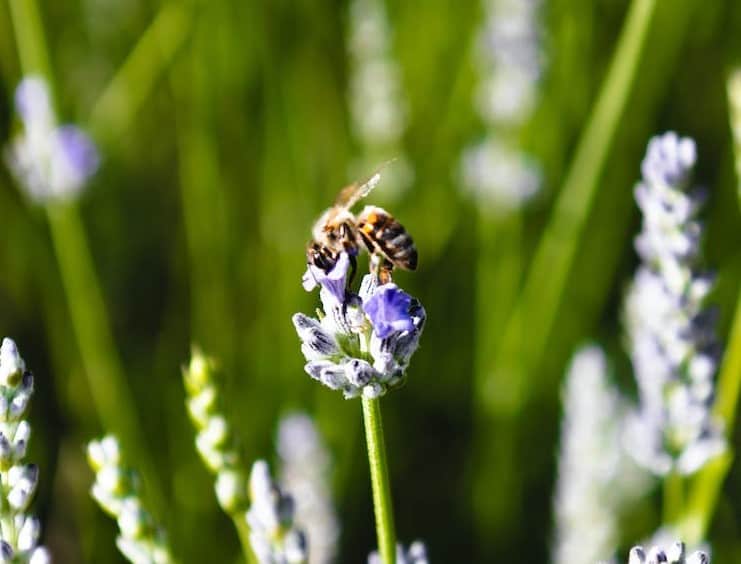
Digger bees, also known as ground bees, play a crucial role in pollination and the overall health of ecosystems.
Despite living underground, they are active when out of their holes.
These bees belong to a large tribe of bees known as Anthophorini and belong to the family Apidae and subfamily Apinae.
In this bee tribe, there are over 750 species, all of which are solitary bees.
Habitat
Digger bees show an impressive diversity in their physical characteristics and behaviors. These bees can be found in various regions worldwide.
However, many of them have been found to abundantly thrive in North America, where many of the species of digger bees have been identified.
Digger bees would thrive in areas suitable for building their nest sites.
They typically prefer nesting in the ground with loose and sandy soil. At the same time, they choose areas that are dry and near abundant floral sources, as these bees rely heavily on nectar and pollen from flowers for their sustenance.
Still, some species have adapted to various environments and can be found even in urban areas despite being away from sandy soil and abundant floral landscapes.
They take advantage of home gardens and parks where flowers provide nectar and pollen for sustenance.
Appearance
Digger bees are easy to spot from other bees. These mining bees would usually have black abdomens and yellow, pale yellow, or even white rings. Their abdomens are more rounded than other bees and slightly taper towards the end.
Some species may also feature additional markings or patterns, such as facial markings or white bands or spots on their bodies.
The bee’s body, particularly the thorax part, is covered with dense hair. The dense coat of hair protects them from abrasions and helps with body temperature regulation.
Additionally, these bees are larger than most bees, with a body length of about half an inch up to more than an inch long. Females are larger and longer than male digger bees.
Most mining bees also have longer faces with what looks like a pointed snout. This physical characteristic helps them access nectar from tubular flowers with deep corollas.
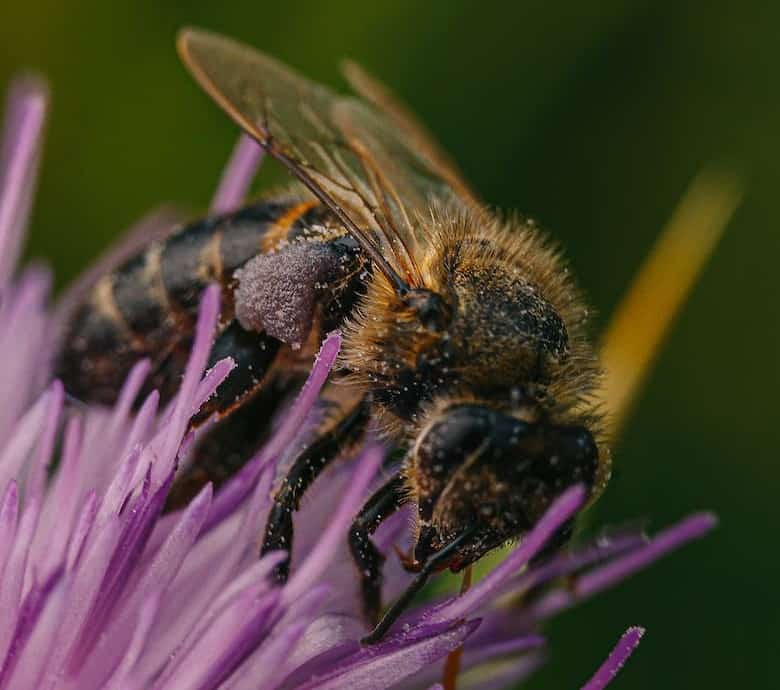
Foraging Habits
Digger bees are very resourceful when it comes to foraging for food. These bees have acquired foraging habits that would ensure their survival and promote a healthy ecosystem.
Digger bees are noted to have some preference for certain types of flowers. These bees seem to be drawn to flowers with deep tubes, such as the common snapdragon and aconite or monkshood. These deep-throated flowers offer an abundant supply of nectar and pollen, from which these bees can get their fill.
As solitary insects, digger bees do not rely on other bees to guide them on the location of floral sources. Instead, they are independent workers who can find their own way to locate food sources.
With a keen eyesight and strong sense of smell, these bees explore their surroundings independently. By doing so, they are able to cover a wider area of floral landscapes, promoting the pollination of various plants.
Some types of digger bees also show a preference for flowers that they habitually have been visiting. They tend to go back to the group of flowers that they have already visited. This behavior has contributed well to the pollination of flowers in the area and a thriving ecosystem.
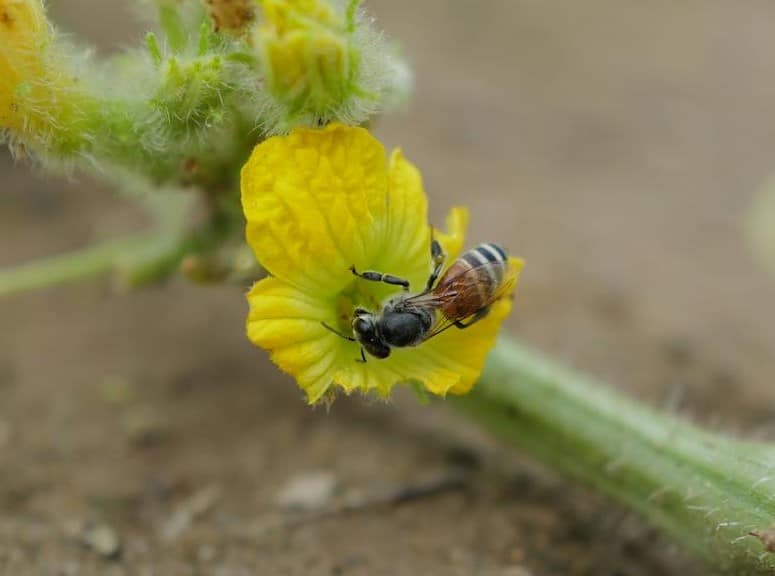
How Do Digger Bees Create Nesting Tunnels
Female digger bees would excavate intricate underground tunnels where they would construct their nests. These nest sites would serve as a safe haven for these bees to live and nurture their offspring.
A female digger bee would use her jaw to diligently dig into the soil to loosen it. From there, she would create the main entrance of her domicile. It would also be the hallway that would branch out to other cells or chambers.
While working on building the cells, the female digger bee would give out a secretion from her abdominal gland. This secretion would serve as a protective lining on the chambers to prevent water from getting inside.
The queen bee would create these cells to build small chambers where she would lay her eggs. Hence, a cell is meticulously planned and intricately crafted to accommodate a growing offspring.
Others would also call and refer to digger bees as mining bees due to their underground nesting habits.
Do Digger Bees Sting?
Due to their large size, digger bees may appear intimidating. However, they are generally docile and non-aggressive.
Unless provoked or threatened, digger bees would not sting. They would only use their stingers as a defense against threats. These bees are less likely to sting compared with other bees or wasps.
It is worth noting that only female digger bees have stingers. The male bees do not have stingers, so they would never get the chance to sting.
When in the presence of digger bees, it is advisable to exercise care and caution. Avoid making abrupt movements that may be perceived as threats to avoid any potential stinging incidents.
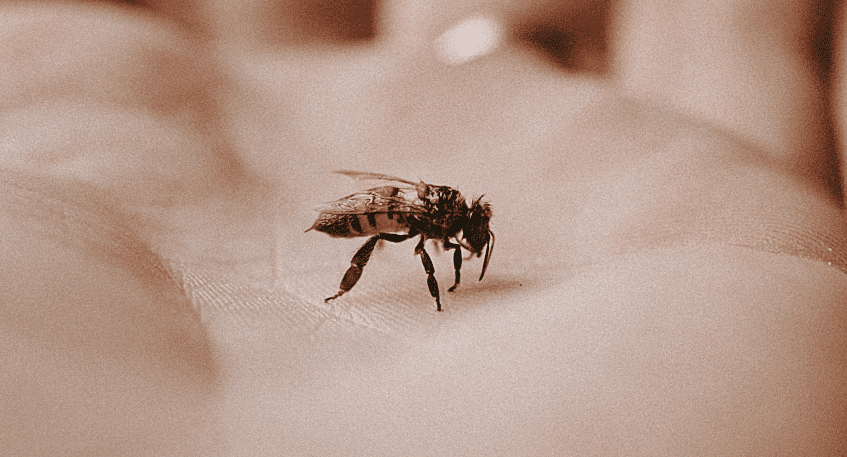
Conservation of Digger Bees
Digger bees are generally not harmful insects and pose no threat to humans. In fact, they bring more benefits than threats to humankind. Even as they build their homes, they already benefit us in more ways than one.
While engaged in their earth-digging activities in building their tunnels and cells, they benefit us by aerating the soil, improving water and nutrient retention.
During their foraging activities, they also play vital roles in pollination, especially flowers that have deep corollas that other bees are not able to pollinate. This aids in the reproduction of many other plant species.
In situations where they or their nests may become problematic, it is advisable to engage the services of experienced pest control professionals who are better knowledgeable and equipped to provide appropriate solutions. This way, we help save the bees in our own little way.
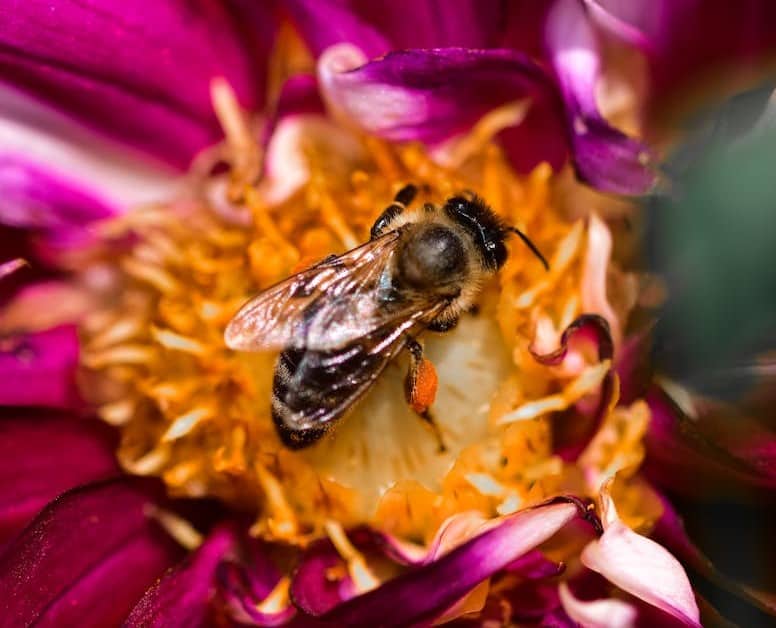
Final Thoughts
In conclusion, digger bees are just one of the many types of bees that contribute significantly to the world around us.
With their ability to aerate the soil while building their homes and their beneficial role in pollinating a wide variety of flowers and many garden crops, these solitary bees are vital for maintaining the balance of ecosystems.
So, the next time you spot a digger bee buzzing around your garden, take a moment to appreciate their remarkable adaptations and the value they bring to our world through pollination.
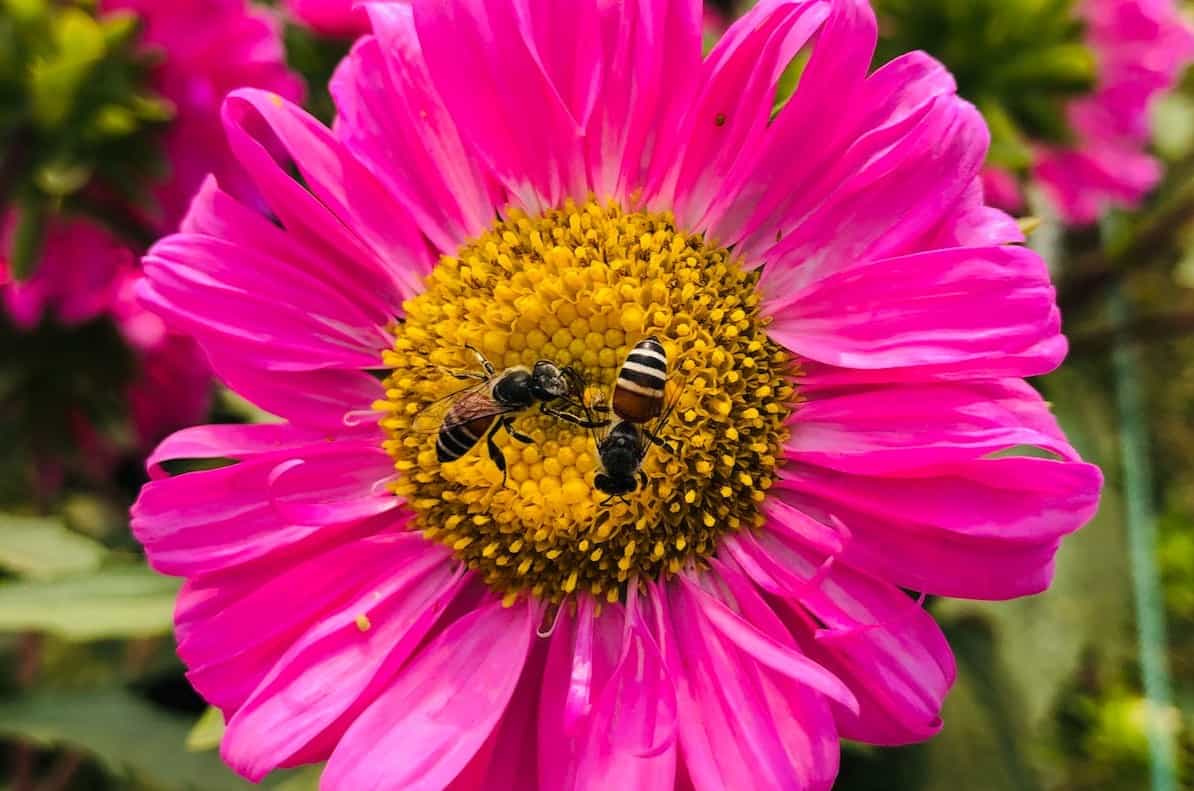
Is it possible to collect and move some digger bees to a different area?